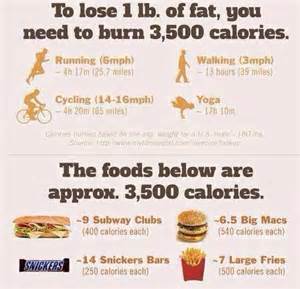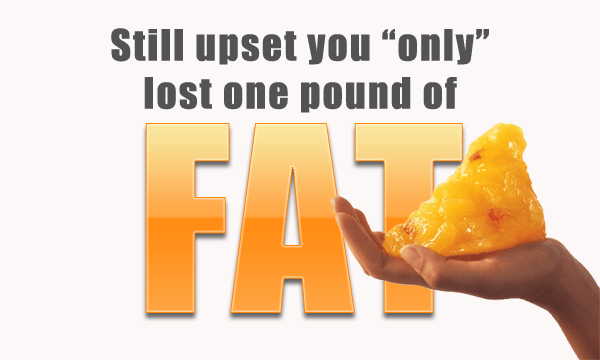
Your daily calorie requirements are determined by your age, sex, body composition –(height, weight, muscle tone), and activity level. All of these combined determine how many calories you burn in a day or your Total Daily Calorie Expenditure (TDEE). Here is a calculator link https://tdeecalculator.net/
There are several different calorie counting options available for use, you can purchase a book, use an internet service or down load an app on your smart phone. Some examples include My Fitness Pal, Calorie Counter and even Fitbit.
Now that you know how many calories you can eat in a day to maintain weight, what if you want to lose weight?
 To lose fat, you need to create a calorie deficit. There are 3500 calories in 1 pound of fat. So you need to burn 500 calories a day more than you consume to lose one pound of fat per week.
To lose fat, you need to create a calorie deficit. There are 3500 calories in 1 pound of fat. So you need to burn 500 calories a day more than you consume to lose one pound of fat per week.
Calories can be burned by decreasing you food intake or increasing your exercise. Examples of exercise include.
- Aerobic exercise. Aerobic exercise is the most efficient way to burn calories and includes activities such as walking, bicycling and swimming. If you want to lose weight you need to perform at least 30 minutes of aerobic activity daily, depending on your body type you may need to increase the time you spend in aerobic exercise.
- Strength training. Strength training exercises, such as weightlifting, Pilates and Barre are important because they help counteract muscle loss associated with aging. Muscle tissue burns more calories than fat tissue does making muscle mass an important factor in weight loss.
- Daily activities. Any extra movement helps burn calories. Look for ways to increase your daily activity. Take the stairs more often or park your car near the back of a parking lot. Even cleaning house, gardening, washing your car or mowing the grass aid with increased calorie expenditure.
For more information on aerobic training including HIIT and weight training click here
Other options to help with maintaining weight loss include
- Drinking plenty of water. Dehydration can be confused for hunger. Adding a splash of orange juice to your water gives it flavor and helps to maintain your blood sugar throughout the day keeping hunger away.
- Eat slowly, it takes 20 minutes for the brain to signal the body that it is full. Put your fork down between each bite. Time yourself eat for 10 minutes, take a 5 minute break and then eat for 10 more minutes. During this time chew slowly, taste your food and again put your fork down between bites.
- Increase your protein intake. Recently science has determined that, unlike carbohydrates and fat, protein cannot be turned into fat in your body. In addition protein is satisfying and helps to keep your hunger away; it also helps to build muscle.
